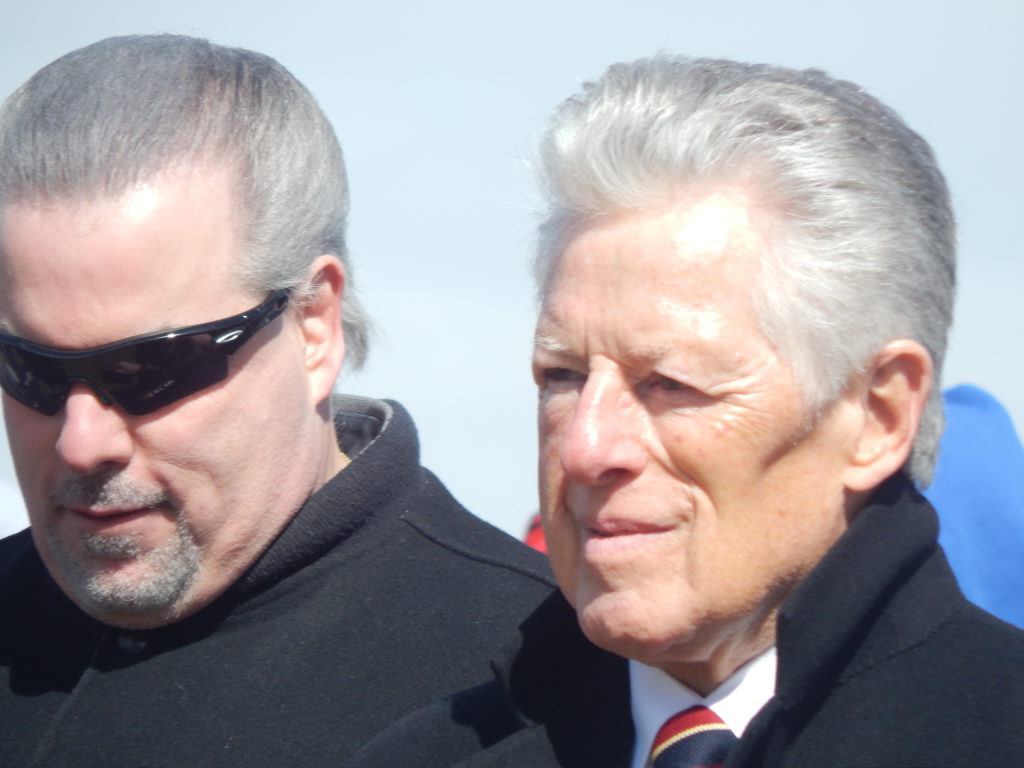What If Jim Florio Had Defeated Tom Kean In 1981?

My major journalistic endeavors have been in the fields of politics and sports. Politics has been my vocation, while sports has been my passionate avocation.
There is a phenomenon common to aficionados of both politics and sports. Both focus on the “what ifs” of their respective fields of avid interest.
As a sports fan, my ultimate “what if” concerns the baseball National League 1951 deciding playoff Game Three between the Brooklyn Dodgers and the New York Giants in the late, lamented Polo Grounds. This historic game was won by the Giants 5-4 on “The Shot Heard ‘Round the World,” Bobby Thomson’s three run home run in the bottom of the ninth inning off Dodger reliever Ralph Branca. What if Dodger manager Charlie Dressen had brought in Carl Erskine to relieve Don Newcombe instead of Branca? Thomson had hit a home run off Branca in Game One two days earlier in Ebbets Field; however, Dressen chose to bring in Branca after Dodger pitching coach Clyde Sukeforth told him that during warm-ups, Erskine had just thrown a pitch in the dirt. My view on this “what if:” Erskine would have turned back the Giants threat, and the Dodgers, with the best team in their history, would have gone on to defeat the Yankees in the World Series.
Now for my leading political “what if:” What if Democrat Jim Florio had defeated Republican Tom Kean in the 1981 New Jersey Gubernatorial race?
My answer: Florio would have been reelected in 1985, and he would have been nominated for president by the Democratic National Convention in Atlanta in 1988. The explanation follows:
Anybody who was involved in the 1981 New Jersey gubernatorial campaign between Tom Kean and Jim Florio will always remember one number: 1,797. This was Tom Kean’s final margin of victory after the recount. Simply put, a switch of 899 votes from Kean to Florio would have resulted in Florio’s election to the governorship.
The 1981 New Jersey gubernatorial race was the finest New Jersey gubernatorial candidate matchup of my lifetime. Both Kean and Florio were candidates with outstanding records of public service, top flight intellectualism, and a strong sense of history. And unlike in any other New Jersey statewide race, both nominees were truly of presidential caliber.
I was a volunteer for Tom Kean in that campaign and the subsequent recount. My faith in him was affirmed, as he went on to become the finest governor of New Jersey over the past century, a governor of unsurpassed administrative acumen and policy insight. And his unquestionable moral and ethical leadership presents a unique contrast to the moral and ethical decadence of Donald Trump.
Over the past 15 years, Jim Florio and I have likewise become friends, in spite of our differing policy views. Kean and Florio each have both a unique federal and state legacy. Kean’s New Jersey was his revamping of public education in the Garden State, and his federal legacy was his acclaimed leadership of the National 9-11 Commission. Florio’s New Jersey legacy was his assault weapons ban, a national model, and his federal legacy was his sponsorship and Congressional leadership in the enactment of Superfund, which qualifies Florio as the leading national federal governmental environmental figure since the establishment of the EPA in 1970.
Alan J. Steinberg served as Regional Administrator of Region 2 EPA during the administration of former President George W. Bush and as Executive Director of the New Jersey Meadowlands Commission under former New Jersey Governor Christie Whitman.





